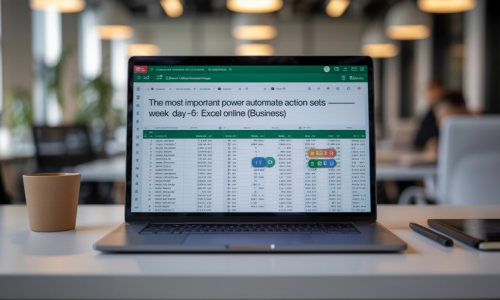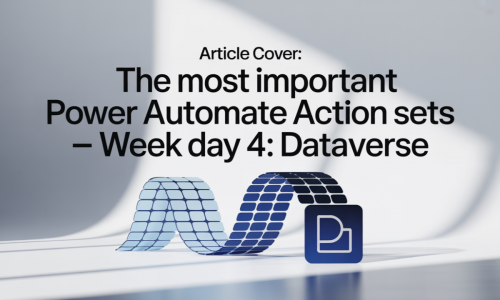Power Platform Bad Decision Week Day 7 – Connectors Galore: Why Not Give Everyone Access to Twitter and Dropbox?
-
Admin Content
-
Oct 03, 2025
-
244
Welcome to the final day of Power Platform Bad Decision Week, where we’ve been exploring some of the most misguided, yet all-too-common mistakes people make when configuring and managing Power Platform environments. Today’s spotlight is on connectors—the magical bridges that allow apps and flows to talk to other services like Twitter, Dropbox, Gmail, and beyond. Used responsibly, connectors are powerful enablers of productivity. But when used recklessly, especially when everyone is given free rein, they can quickly become a nightmare.
So, let’s imagine the scenario: you’ve set up your environment, your team is excited, and instead of carefully managing which connectors are available, you think, “Why not just enable everything? After all, what’s the harm in giving people access to Twitter and Dropbox?” Well, the harm, as you might guess, is plentiful.
The Temptation of "Unlimited Freedom"
At first glance, enabling all connectors for all users feels liberating. It removes roadblocks, avoids endless conversations about “Can I use this connector?” and makes you look like the cool admin who doesn’t say no. Employees can integrate their favorite tools without waiting on approvals, and the organization seemingly benefits from fast innovation.
But this “unlimited freedom” is an illusion. The same openness that makes it easy to connect to business-critical tools also makes it dangerously easy to connect to personal or insecure platforms. Suddenly, your sensitive business data is just a few clicks away from being synced to someone’s personal Dropbox account or tweeted out to the world—intentionally or not.
Without guardrails, connectors turn from productivity enablers into risk accelerators. And once the horse is out of the barn, it’s very difficult to put it back in.
Twitter as a Data Leak Waiting to Happen
Twitter (or any public-facing social media platform) is a perfect example of how connectors can go wrong. Imagine an enthusiastic employee building a Power Automate flow to post company updates directly from a SharePoint list. It might sound like a neat idea at first—automation meets marketing! But what happens when that flow malfunctions, or worse, when it starts posting confidential information instead of polished updates?
The risk isn’t just limited to mistakes. Malicious actors could deliberately set up connectors that exfiltrate company data by pushing it to Twitter in small, undetectable chunks. The platform’s public nature makes it especially dangerous because once something is posted, it’s out there forever. No “undo” button can protect your company’s reputation after an accidental leak.
Dropbox: Convenient but Costly
Dropbox represents another type of danger—data leaving the corporate boundary under the guise of convenience. Many employees love Dropbox for personal use, and it’s often one of the first connectors they gravitate toward. After all, what’s easier than dropping a report into a flow and having it magically appear in a personal folder for “safe keeping”?
But here’s the problem: personal Dropbox accounts are not corporate-sanctioned data repositories. Files stored there are outside of organizational visibility, compliance policies, and security controls. Sensitive client information, financial reports, or intellectual property can all slip into unmanaged personal storage. Even if the employee has no ill intent, they’ve essentially just created a massive compliance violation waiting to be discovered.
Multiply this by dozens or hundreds of employees, and the organization is suddenly bleeding data into personal cloud services—completely outside of its control.
Compliance, Security, and the "What If?" Factor
Beyond the obvious risks of leaks and misuse, enabling unrestricted connectors creates an enormous compliance burden. Many industries have strict regulations around where data can be stored, how it can be shared, and who can access it. Allowing people to freely connect to external services makes it nearly impossible to prove compliance during an audit.
There’s also the “what if?” factor. What if an employee accidentally deletes critical business files while syncing them with an external connector? What if sensitive client communications end up in a personal email inbox because someone thought it would be more convenient? These scenarios may sound hypothetical, but they happen all the time in organizations that fail to control connectors.
The damage isn’t just financial—it’s reputational. Clients and partners lose trust when they discover their data was handled carelessly, and that trust is hard to rebuild.
Smarter Approaches: Guardrails, Not Handcuffs
So, if giving everyone access to connectors is a bad decision, what’s the smarter approach? It’s all about balance. You don’t need to shut down every connector and stifle innovation, but you do need to implement guardrails. This means:
- Defining clear data loss prevention (DLP) policies that separate business-critical connectors from consumer-grade ones.
- Creating approved environments with only the connectors that align with corporate compliance standards.
- Regularly reviewing connector usage to spot risky patterns before they become disasters.
- Educating users on why certain connectors are restricted, so they understand the why behind the policies.
By implementing these guardrails, you empower employees to innovate safely without giving them the keys to the entire internet.
Wrapping Up Bad Decision Week
As we close out Power Platform Bad Decision Week, today’s lesson serves as a fitting finale: not every connector belongs in everyone’s toolbox. While it might feel empowering to give employees unfettered access to Twitter, Dropbox, and beyond, the risks to security, compliance, and reputation far outweigh the short-term convenience.
The Power Platform is designed to empower business users, but with great power comes great responsibility. Your role as an admin or decision-maker is to strike the right balance between enabling innovation and protecting your organization’s most valuable assets. And that balance starts with saying “no” to the idea of giving everyone access to every connector under the sun.
After all, just because you can doesn’t mean you should.





